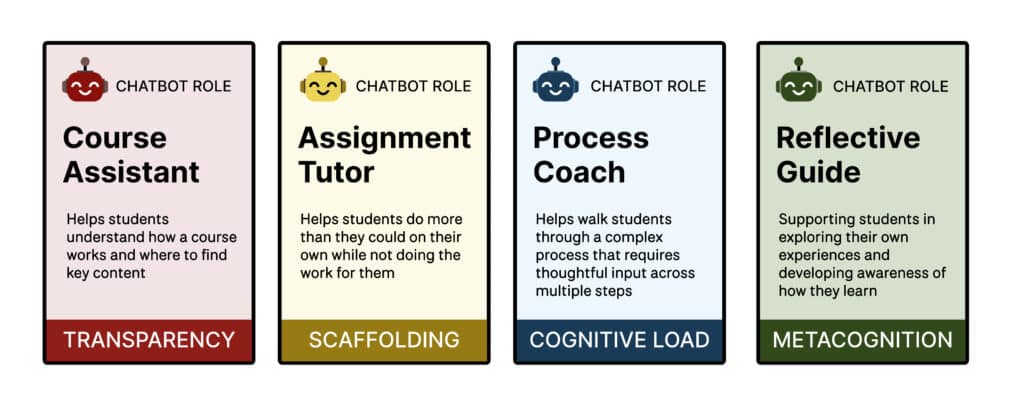AI doesn’t know what its purpose is without our help. Teachers have crucial role to play in deciding whether AI has role to place in their classrooms.
When we started an internal CDIL chatbot pilot in the spring of 2024, our hunch was that the best way to figure out what role AI might play in teaching and learning was to try something concrete in a few classes.
What we didn’t anticipate was how eager others would be to try something themselves — and how much we would learn in the process.
When we shared our initial concepts for designing custom course chatbots in the AI Faculty Working Group, we soon began to expand the pilot in response to the ideas others had for ways to experiment in their classes.
What gave us momentum was the sense that building these custom chatbots felt purposeful. We were trying to solve particular problems in our teaching and were curious to see what AI might be able to do. Now we had a platform that allowed us to design the experiences students have with a chatbot, much the same the way we would craft other aspects of the course.
In reflecting on my experiences building custom chatbots with George Wyner (CSOM), John FitzGibbon (CDIL), Vincent Cho (LSOED), and Belle Liang (LSOED), it became clear that a few common roles were already emerging that would help guide a chatbot if we included it in a course.

It also became clear that teachers need to be the ones deciding when AI has a purpose in helping students learn.
You can read more about what we learned from our experiments with custom chatbots in my article How to Create Custom AI Chatbots That Enrich Your Classroom from Harvard Business Publishing Education.
